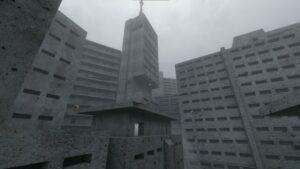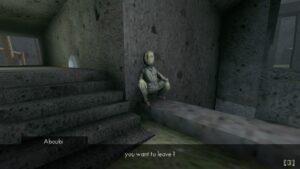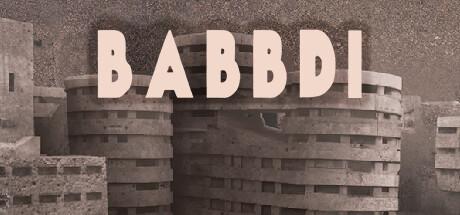For my Critical Play, I chose to play Babbdi, a first-person exploration experience where the description of the game as written on the platform Steam says “Visit the town of BABBDI, a forsaken district in the outer ring of the megapolis. Meet its inhabitants and discover how to escape.” Created by Sirius and Leondard Lemaitre and released by the Lemaitre Bros in 2022, I believe the game is tailored towards individuals who enjoy exploration as the primary means of interaction with a game’s storyline. In Babbdi, there is no combat; players simply explore. Indeed, walking in Babbdi is a narrative device that weaves the players’ movement into the very structure of the story. Through walking, the game integrates its mechanics of exploration, finding items, and solving puzzles and tasks with aesthetics such as visuals, sound, and indirect narrative delivery, to create a rich experience, one that can only be explored through direct exploration.
In the game, walking is the fundamental mechanic for exploration. As players walk through the city, they move through different environments and items, each revealing part of the city’s backstory. This slow uncovering through movement sets the story’s pace; it’s almost like you’re turning the pages of a book one by one, connecting with the environment at your own pace.
The act of walking to find items — another mechanic — also advances the narrative. For example, with a pickaxe, I was able to break down barriers and go to places that were previously unreachable. I also came across a worn out photograph while walking, making me wonder what this photograph was and what it said about the story of the city’s former residents.
The mechanic of solving puzzles, which was integrated into the game in a seamless manner (for instance, figuring out how to start a generator), also involved walking back and forth between locations in an attempt to piece clues together, solve the intended task, and reinforce player’s engagement as a means of advancing the story.


What immediately jumped at me as I played the game was Babbdi’s aesthetics. The visual style employed — the brutalist architecture, the dystopian-like look of the scenery, the almost geometric structures made of raw concrete, and the deserted buildings — created a feeling of deep discomfort — it felt like something was wrong, and it felt like I wanted to leave right away. This, in conjunction with the ambient sounds like the echo of footsteps in empty plazas and the occasional creak of metal, further contributed in creating a haunting landscape, both visually and auditory-wise. Thus, when the player was walking, either through the city experiencing visually the textual clues that helped piece the city’s context or by hearing the sounds that came with each step, the narrative was further advanced. Furthermore, the design choice to use subtle narrative delivery such as interactions with NPCs or graffiti on a wall was smart because it was in alignment with the eerie-like feel of the setting and advanced the storyline by giving clues about the city’s history.



